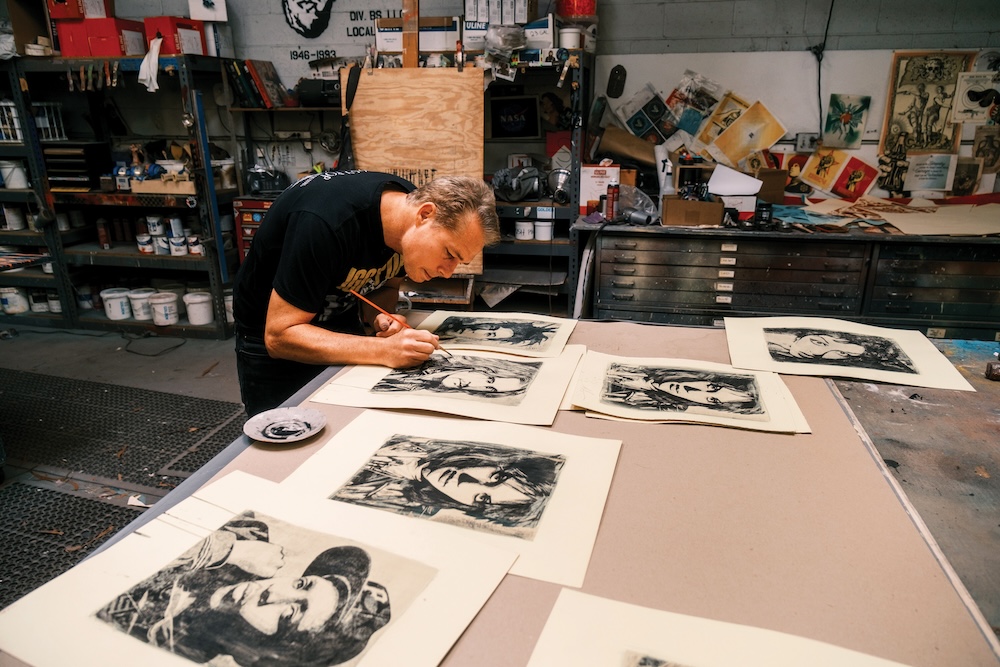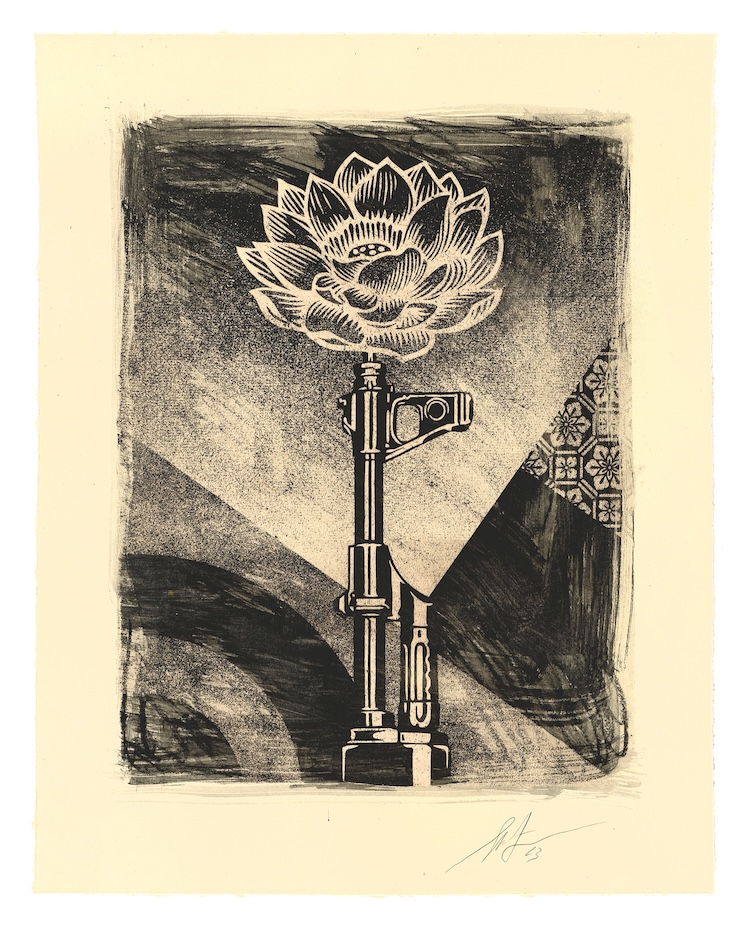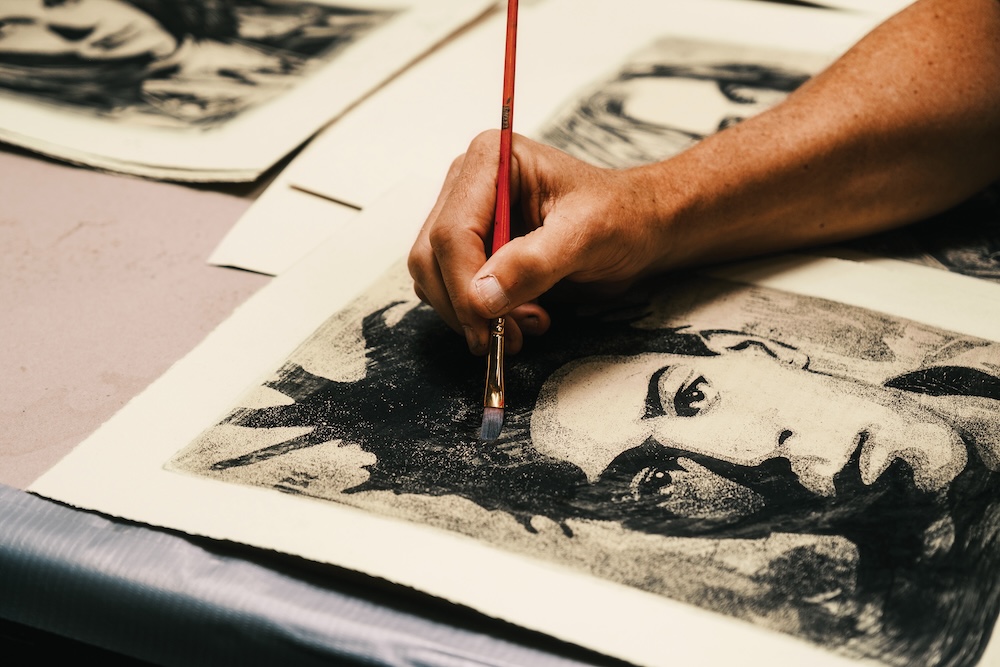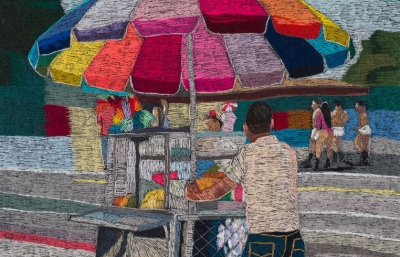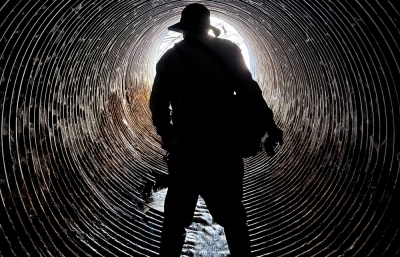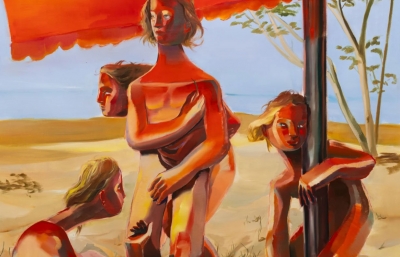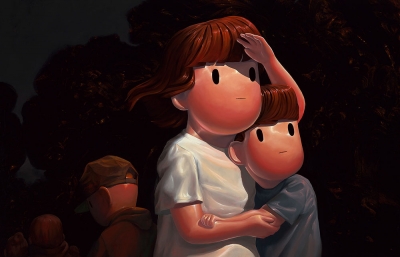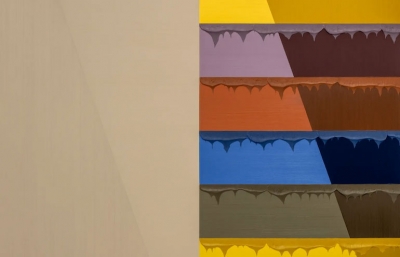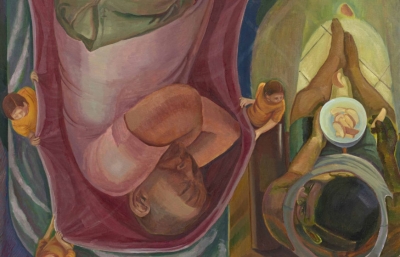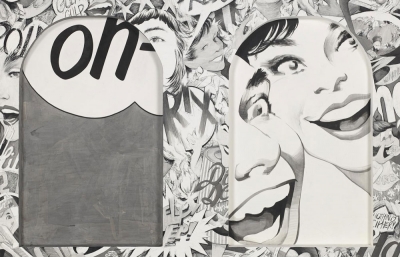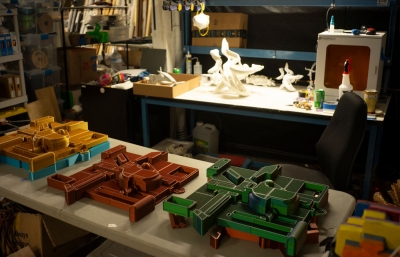On the eve of his first Los Angeles exhibition in over 5 years, Subliminal Projects is pleased to present ICONS, an exhibition by gallery founder Shepard Fairey. The exhibition, which Juxtapoz previewed last month and created an exclusive interview with Shepard that will showcase in our Winter 2024 30th anniversary issue, will debut a new series and method of hand-embellished “mono-engravings,” as well as screen prints on wood and metal, hand-painted multiples (HPMs), and modular works focused around Fairey’s career-long investigation into iconography and phenomenology.
“Icons have the power to shape culture when they become widely recognized and resonant reference points that are easily understood shorthand for a concept," Fairey says. "This exhibition is filled with images, symbols, emblems, and portraits that I classify as iconic and make up a portion of the iconography I’ve created throughout my career."
As the show opens on November 18th, we would like to share an exclusive excerpt from our interview with Fairey, published in full later this month in our Winter 2024 Quarterly. ![]()
As I enter Shepard Fairey’s Los Angeles studio on a sunny October afternoon, a considerably large painting of Andy Warhol sits on an easel, eyes focused and looming directly over the shoulder of Fairey as he adds watercolor touches to a series of works on paper. I can’t help but see the significance of the moment, of this scene. Fairey could, rather easily or perhaps too nonchalantly, be compared to Warhol, an ambassador of something we call Pop, an artist who changed the perception and definition of what art could be on a rather large scale. Their work also shares a strong sense of defiance and subversion, punctuated by a powerful use and commentary on media. Here was an image of Warhol overlooking a prodigal son; in the same way, Fairey’s Obey Giant iconography has ominously surveyed the landscape of cities around the world as this ubiquitous message of surveillance, but also in a way, a message of hope and rebellion against predominant forms of political and social control, created by what Fairey dubs the “puppet masters.” That Fairey was putting the finishing touches on a body of work he calls Icons to close out 2023 at his gallery, Subliminal Projects, all feels perfectly aligned with who he is, what he has become to so many, and the lessons of Warhol—so largely prominent in our conversation.
Subliminal Projects, as both a gallery, home base, and incubator for the world that Fairey holds so influential to him, is an ideal home for this new body of work. He shows me a series of mono-etchings on paper that contain a mixture of musical, cultural, and political icons he admires—those who crossed boundaries and genre stereotypes, those who were trailblazers and antiheroes—to become heroes in their own right. I like this dichotomy. Go no further than the roster of shows at Subliminal to find Fairey’s heart. Look at the icons he paints to see where he has come from, and see his masterful technique as a printer, illustrator, painter, muralist, street artist, and visual collage artist to see where he is going.
I’ve spoken to Fairey numerous times over the 17 years I have been at Juxtapoz, and he has been featured even more times in the 30 years that this magazine has been printed. I haven’t heard Fairey more focused on his artwork, more engaged, and more excited about his craft than ever before. The elder statesman of street art has grown up and understands the position of being an icon himself as he creates something iconic for others. But like Warhol before him, Fairey is actively changing the conversation about what can be art, how to receive and place art in the world, and how to use art to investigate both personal and universal truths.
Evan Pricco: Let’s start with something technical. Is there a historical precedent for working with mono-engravings, or are you working in a whole new way?
Shepard Fairey: This wasn't taken from any specific artist. But artists like Jim Dine and Rauschenberg, and, really, Ed Ruscha experimented a lot with weird techniques of staining paper and doing things like that. And then, when you look at my own history, this is like me sampling techniques from my own history in a different way than I've ever used them before. I've done plenty of printing and stenciling, but this is a little bit different in that it's bringing the drawing element back into it. When people are like, "Oh, Shepard Fairey just does everything on the computer," I actually have a traditional illustration background. I studied illustration so I've always really enjoyed texture from graphite and charcoal, and from ink and watercolor.
This new body of work does appear to be a combination of illustration and printmaking.
And stenciling. And engraving with a laser is something that a lot of people have done, but usually they do it in a way that's sort of obvious. They paint a piece of wood black, and then they engrave out of it, and you can look at it instantly and go, "That's a laser-engraved piece." And just the same way you can look at some things and go, "That's obviously the spray paint stencil," or "That's obviously a brush stroke," or "That's obviously a screen print." Where I think it gets interesting is when those things come together with a little bit of mystery.
I think that the name of the show is Icons because I realize that I've been creating icons and iconography and trying to make things iconic, developing a style that people said was recognizable and that you could call iconic. This is part of my mindset, but also, when things go too far in an obvious direction, pursuing iconic, they end up looking like generic international symbols. And that's not really the way I define iconic. So, I like that there's the direct power of the image, which is very graphic, but then there's a mystery in the technique and subtlety in aspects of the execution.
Shepard Fairey ICONS will be on view at Subliminal Projects from November 18—December 30, 2023. The full interview with Shepard will be in the upcoming Juxtapoz Winter 2024 Quarterly.

